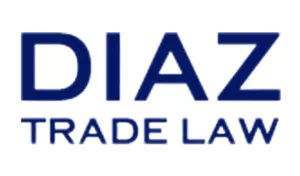If a company or individual believes they have violated Foreign Trade Regulations and the U.S. Census Bureau is unaware of this violation, proactively and voluntarily disclosing the potential wrongdoing can substantially reduce penalties. A system of disclosures, known as Voluntary Self-Disclosures (VSDs) or Prior Disclosures (PDs), exists for a wide array of federal agencies.
U.S. Census Bureau's Trade Enforcement
The U.S. Census Bureau's mission is to serve as the nation's leading provider of quality data about its people and economy. The Census Bureau's Trade Regulations Branch in the Economic Management Division is chiefly responsible for enforcing the Foreign Trade Regulations. The Foreign Trade Regulations (15 C.F.R.Part 30) require certain exporters to file export information with the U.S. Census Bureau. They detail requirements for filing export information, explain filing procedures, and establish penalties for noncompliance. The regulations require export information to be filed on the Automated Export System (AES). The information submitted by exporters on to AES is known as Electronic Export Information (EEI).
EEI filings are required for a wide variety of circumstances, including:
- Exports valued at more than $2,500 to any destination except Canada
- Exports that require an export license under the Export Administration Regulations (EAR)
- Exports on the EAR's Commerce Control List (CCL) and destined for China, Russia, or Venezuela
- Exports subject to the EAR and destined for a country in Country Group E:1 or E:2 (currently, Cuba, Iran, North Korea, and Syria)
- Exports subject to the International Traffic in Arms Regulations (ITAR)
- Exports containing rough diamonds
Practitioner Tips: An EEI filing is required for a single commodity having one HTS Code/Schedule B Number valued over $2500. The EEI should be filed with the U.S. Customs and Border Protection (CBP) on the Automated Commercial Environment (ACE) portal.
Please note that the above is not a comprehensive list of circumstances in which an EEI filing is required, and also that there are many exceptions for filing.
Practitioner Tips: When in doubt, file. It almost never hurts and can only help.
Voluntary Self-Disclosure Process
The Census Bureau defines a VSD as "a narrative account with supporting documentation that describes violations of the Foreign Trade Regulations." According to the Census Bureau, a VSD "reflects due diligence in detecting, and correcting potential violation(s) when required information was not reported or when incorrect information was provided that violates the [Foreign Trade Regulations]." Details on the Census Bureau's VSD program are found in the Foreign Trade Regulations at 15 C.F.R. 30.74.
If a company or individual suspects it has violated the Foreign Trade Regulations, the party should inform the Census Bureau to benefit from the possibility of mitigated penalties offered by a VSD. The party should begin by submitting an initial notification to the Census Bureau. The initial notification must be submitted in writing on company or law firm letterhead and addressed to:
Chief, Economic Management Division
U.S. Census Bureau
4600 Silver Hill Road, Room 6K064
Suitland, MD 20746 (if sent by courier) or Washington, D.C. 20233
(if sent by USPS)
A notification to the Census Bureau of an apparent violation is only considered a valid VSD if information is received by the Census Bureau for review prior to the Census Bureau or any other federal agency learning of the same or substantially similar information from another source and has commenced an investigation or inquiry in connection with that information.
Although the VSD process can tremendously benefit parties filing VSDs, the system benefits the Census Bureau, too. First, the VSD process helps the Census Bureau proactively enforce the Foreign Trade Regulations by incentivizing compliance. Second, the VSD process helps ensure that the trade data compiled from individual export filings is accurate. The corrected statistics are published in the U.S. International Trade in Goods and Services Report and U.S. trade databases such as USA Trade Online.This dataset is a key economic indicator with important policy implications.
Initial Notification
The initial notification should contain the following information:
- Name of the person making the disclosure
- A brief description of the suspected violations
- A description of the general nature, circumstances, and extent of the violations
Additionally, if the suspected or discovered violation(s) involves exports subject to EAR, ITAR, other regulations, disclosure should also be made to the appropriate federal agency.
Practitioner Tips: In your initial notification, specify your intent to submit a subsequent supplemental narrative and request a specific deadline for submitting the supplemental narrative. Generally, the Census Bureau is amenable to a 60-day or 90-day window to submit the supplemental narrative.
After the Census Bureau receives an initial notification, the case will be assigned a case number and assigned to an analyst. The analyst will notify the party of any additional information required, and approve or amend the requested deadline for submitting the supplemental narrative.
Five-Year Review
The Foreign Trade Regulations require any parties who submit a VSD initial notification to conduct a retrospective review before submitting the supplemental narrative. This review should thoroughly audit all export transactions where possible violations of the Foreign Trade Regulations are suspected. The Foreign Trade Regulations recommend this retrospective review to cover five years. The recommended five-year review period begins five years before the date the initial notification was filed and ends on the day of the initial notification filing. The Census Bureau cautions that a retrospective review that goes back less than five years risks that violation may not be discovered and that the violation could later become the subject of a Census Bureau investigation.
Practitioner Tips: If a VSD party discovers any actual or suspected violations as part of the retrospective review, these findings should be tabulated in a spreadsheet with clear headers identifying the date or the actual or suspected violations, the nature of the violation(s), and the appropriate reference number(s).
Supplemental Narrative
Upon the completion of the retrospective review, parties should timely submit a supplemental narrative. The supplemental narrative should contain the following information:
- A description of the kinds of violations involved
- A description of all data that was either not reported or reported incorrectly
- An explanation of when and how the violations occurred (including both the violation(s) reported in the initial notification and any violation(s) discovered in the retrospective review)
- The complete identities and addresses of all individuals and organizations involved in the activities giving rise to the violations
- A description of any mitigating circumstances
- Corrective measures taken
- Internal Transaction Numbers (ITNs) of the missed and/or corrected shipments
Practitioner Tips: Parties submitting a VSD supplemental narrative typically submit the narrative directly to the analyst assigned to the investigation. Strong supplemental narratives are letters written on company or law firm letterhead with clearly marked and detailed exhibits enclosed. A sample VSD supplemental narrative is available here. Additionally, parties should enclose a correction action plan as an exhibit demonstrating the submitter's commitment to improving its export compliance processes.
Penalty Mitigation
A properly filed VSD can potentially substantially mitigate penalties. According to the Foreign Trade Regulations, "the Census Bureau strongly encourages disclosure of any violation or suspected violation of the [Foreign Trade Regulations]." Furthermore, a "[VSD] is a mitigating factor in determining what administrative sanctions, if any, will be sought."
The U.S. Census Bureau does not publish statistics on penalty mitigation as a result of VSDs. However, according to a 2017 webinar transcript, a Census Bureau official explained that the motivation of the Census Bureau's VSD program is not so much to levy penalties but rather to make corrections moving forward:
The purpose of the VSD process is to correct the data and improve the company's compliance program. It's not a program that's used for targeting. It's to make sure that the data is correct and that companies have great export compliance programs and that they submit correct EEI in the future.
The official also explained that "a VSD has never triggered a penalty."
Please note that although a VSD is a mitigating factory, the Foreign Trade Regulations note that "the mitigating effect of [a VSD] may be outweighed by aggravating factors. [VSD] does not prevent transactions from being referred to the Department of Justice (DOJ) for criminal prosecution. In such a case, the [Bureau of Industry & Security] or the [Department of Homeland Security] would notify the DOJ of the [VSD], but the consideration of that factor is within the discretion of the DOJ."
Census Responses
After the Census Bureau receives both the initial notification and supplemental narrative, the Census Bureau will notify Immigration and Customs Enforcement (ICE) at CBP, and the Office Enforcement (OEE) at BIS. The Census Bureau will then acknowledge ethe disclosure by letter, provide the person making the disclosure with a point of contact, if it has not already done so, and take whatever additional action it deems appropriate after further investigation.
Typically, after conferring with management, the Census Bureau takes one of the following steps:
- Inform the person or company making the VSD of the action to be taken
- Issue a warning letter or letter setting forth corrective measures required
- Refer the matter, if necessary, to the OEE for appropriate action
Often, after Census has received all necessary information to ensure all discrepancies have been corrected, the agency will issue correspondence closing out the matter.
Practitioner Tips: A letter closing out the matter will generally describe the violation(s) contained in the initial notification and the violations discovered during the five-year retrospective review, acknowledge the submitting party's efforts to comply with 15 C.F.R.30, and explicitly state that the case is being closed. The letter will generally note that Census reserves the right to reopen the case if additional facts are uncovered or future discrepancies are noted.
Originally published by Bloomberg Law .
The content of this article is intended to provide a general guide to the subject matter. Specialist advice should be sought about your specific circumstances.


